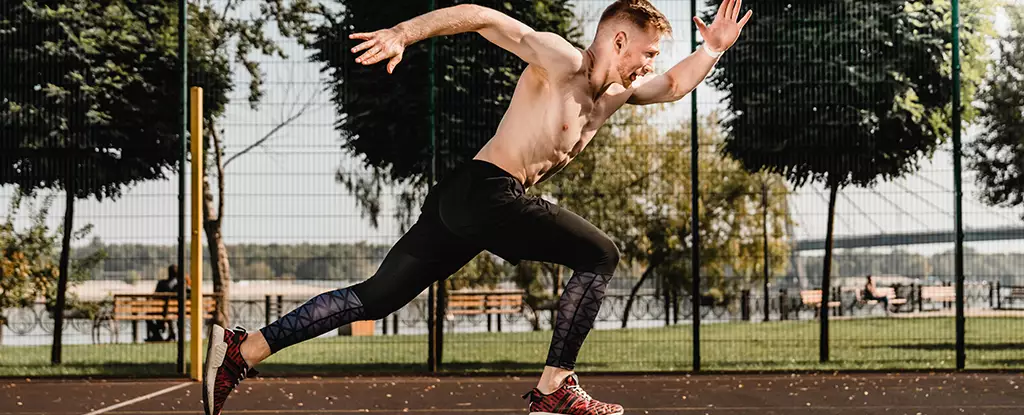Exercise is often hailed as a panacea for a multitude of health woes; from improving cardiovascular health to enhancing mood, it’s hard to find a facet of well-being that isn’t positively impacted by physical activity. However, fresh insights from recent studies suggest a caveat that extreme exercise enthusiasts, particularly those engaged in rigorous training or physically demanding occupations, might need to heed: an increased vulnerability to infections following intense workouts. This nuanced understanding challenges the one-size-fits-all narrative surrounding fitness and immunity.
In 2023, a groundbreaking analysis conducted by researchers at the Pacific Northwest National Laboratory on over 4,700 post-exercise fluid molecules from firefighters revealed a concerning trend: intense physical exertion may result in a temporary downtick in immune response. “Individuals who are highly fit might find themselves more susceptible to respiratory infections right after vigorous exercise,” noted Ernesto Nakayasu, a biomedical scientist involved in the study. This revelation is not merely alarmist; it opens the door to a significant re-evaluation of how we perceive fitness and its immediate repercussions on the body.
Evaluating the Evidence: The Study’s Findings
The crux of the research lay in examining samples of blood plasma, urine, and saliva from 11 firefighters who had engaged in a 45-minute session of intense exercise, while carrying heavy gear across hilly terrain. With the intention of unveiling the body’s physiological responses to extreme exertion, scientists sought to document the immune system’s state both before and after the workouts. What they discovered is both intriguing and troubling: while exercise is known to boost health, it also spurred indications of immune suppression in the participants.
After intense exertion, the firefighters displayed a notable decrease in inflammatory molecules along with increased opiorphin, a compound that aids blood vessel dilation. The reduction in inflammatory activity is significant, as inflammation plays a pivotal role in immune defense mechanisms. Nakayasu and his colleagues speculate that this adaptive response may facilitate improved oxygen and nutrient delivery to muscles during heightened physical demand. Yet, this raises a critical question: at what cost does such adaptability come?
Understanding the Aftermath: Immune Responses Post-Exercise
The ramifications of these findings are significant. While moderate exercise is well-documented to enhance immune function over the long term, intense physical activity appears to disrupt this balance, potentially leaving individuals unguarded against viral respiratory infections just after training. Strikingly, despite a rise in antimicrobial peptides present in the firefighters’ mouths, there was no observable impact on inhibiting E. coli growth, signifying a low protective capacity against infections in their oral cavity.
This limited efficacy highlights a phenomenon that many in the fitness community often overlook: the intensity of exercise doesn’t necessarily correlate with a bolster to immunity. Instead, it can lead to a state where the body is simultaneously adapting to stresses and losing its proactive defensive posture against infections.
Some scientists argue that these findings shouldn’t necessarily be equated with decreased immunity, suggesting instead that they represent a heightened state of immune surveillance. That said, this perspective does little to assuage concerns about the unique conditions faced by firefighters and similarly active professions that may further complicate their immune responses.
A Call for Broader Research and Awareness
As compelling as the current study is, it invites scrutiny regarding its applicability on a wider scale. The research primarily involved healthy male firefighters, which poses inherent limitations when generalizing the implications across different demographics. There’s a pressing need for more diverse studies that encompass various age groups, genders, and health conditions to fully grasp the interplay between intense exercise and immune function.
Moreover, it’s essential to recognize that the firefighting profession, characterized by exposure to diverse pollutants, may alter immune reactions independently of exercise intensity. Thus, any findings related to immune suppression post-exercise could also be connected to occupational hazards rather than solely the effects of physical exertion.
While the link between strenuous exercise and heightened incidence of respiratory infections is emerging, these studies should foster a more nuanced discussion among fitness enthusiasts and professionals alike. It’s paramount to strike a balance—promoting the myriad benefits of exercise, while also emphasizing the importance of listening to one’s body and recognizing personal limits.
These findings stress a crucial point: extreme exercise must be approached with caution. The conversation around fitness needs to evolve; it should embrace a holistic understanding of health that harmonizes physical demands with the body’s innate protective mechanisms. Only by shedding light on these complexities can we create a healthier, more informed future for exercise enthusiasts and professional athletes.

